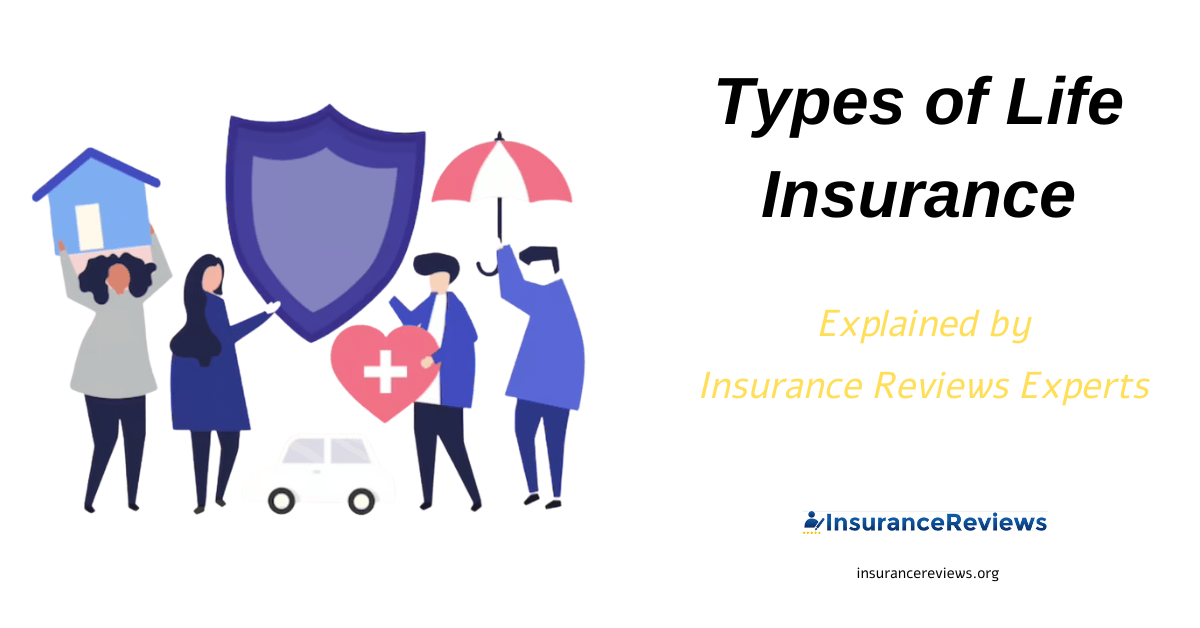For many people, Life Insurance is an excellent means to building and establishing a secure and solid foundation for their family and loved ones, in a fiscal sense.
Life insurance plays a critical role in our lives by providing financial protection to our loved ones in the event of our unexpected death.
It ensures that our family members and dependents are taken care of and can maintain their standard of living even after we’re gone.
Life insurance is not just for the wealthy, but for anyone who wants to provide for their family’s financial security in case of an unexpected loss.
Indeed, it is very much considered a financial investment that ultimately provides a lump sum payment to the policyholder’s beneficiaries upon their death, for support and the fulfilment of other expenses.
There are 2 types of life insurance and its respective subcategories:
Term Life Insurance

It is a type of life insurance that offers coverage for a certain time frame, usually about 10-30 years. It also tends to be more affordable than permanent life insurance because it only provides coverage for a limited period of time.
Types of Term Life Insurance
- Level term life insurance provides a fixed death benefit and premium for a specified period, typically 10 to 30 years.
- Decreasing term life insurance provides a decreasing death benefit over time, often used to cover a mortgage or other loans.
- Annual renewable term life insurance provides coverage for one year at a time, with the premium increasing each year based on the insured’s age.
- Return of premium term life insurance returns the premium paid if the insured outlives the policy term, but typically has higher premiums than other types of term life insurance.
Permanent Life Insurance

This is also known as whole life insurance, and offers coverage for the policyholder’s entire lifetime and includes a savings component.
Types of Permanent Life Insurance
- Whole life insurance provides coverage for the entire lifetime of the insured.
- Universal life insurance offers flexible premiums and death benefits, as well as potential cash value growth.
- Indexed universal life insurance offers potential cash value growth based on the performance of a stock market index.
- Variable universal life insurance allows the insured to invest the cash value portion of the policy in a variety of investment options.
Key Takeaways 💡🌞
Term Life
- Has options for coverage in different timelines
- Longer payment terms
- Affordable especially for low-income families
- Higher payouts compared to Permanent Life Insurance
- Perfect for employees
Permanent Life
- Locked in premiums
- In addition to death benefit, cash value can also be provided
- Premiums don’t expire as long as you keep making payments
- Has savings component
- Lifetime coverage
Term Life Insurance
With Term life insurance, you can choose coverage in different time periods starting with a minimum of 1 year. Its length of coverage can be chosen based on your specific needs and circumstances.
This type of life insurance policies have flexibility when it comes to coverage amounts and beneficiaries.
About cost, term life insurance is generally lower than other types of life insurance, such as whole life or universal life.
Term life provides a death benefit to your beneficiaries if you pass away during the coverage period.
One important thing to note is that term life insurance policies don’t offer cash value meaning there is no investment nor savings component associated with it.
Whole Life Insurance
Permanent life insurance has excellent lifetime coverage for the insured person.
Its provisions include greater flexibility compared to term life insurance, allowing policyholders to make adjustments to their premiums and coverage and premiums needed.
The cost for its policies is mostly higher than that of term life insurance on account of its extended coverage period and potential cash value accumulation.
Benefits-wise, the death benefit is paid out to the policy beneficiaries upon the insured person’s passing.
Some types of permanent life insurance policies, such as whole life insurance, feature a cash value component that increases over time and can be withdrawn by the policyholder during their lifetime.
Universal Life Insurance
Universal life insurance offers both a death benefit and a cash value component.
With universal life insurance, the policyholder can adjust their premium payments and death benefit over time to meet changing needs and financial situations.
Its cash value component earns interest at a rate determined by the insurance company, and the policyholder can often access these funds through withdrawals or loans.
All in all, Universal life insurance can be a good option for those who want both lifelong coverage and flexibility in their policy.
Variable Life Insurance
The coverage for Variable life insurance runs at a specified length of time, normally the insured’s lifetime. The flexibility in premium payments is its number one advantage, along with the investment options. The cost can differ based on the policyholder’s age, health, and investment performance. It also provides a death benefit to beneficiaries upon the policyholder’s death and may also accumulate a cash value over time.
Final Expense Insurance
Final expense life insurance is designed to provide coverage for end-of-life expenses.
It often offers a locked-in length of coverage and may have fewer flexibility options compared to other life insurance products.
The cost of final expense insurance can vary depending on the individual’s age, health, and coverage needs. It generally provides a death benefit to the beneficiary, but may not accumulate cash value over time.
Other Types of Life Insurance
Aside from the aforementioned types of life insurance, there are also other policies with which to choose from:
Group Life
Group life insurance is a type of life insurance policy that is purchased by an employer for the benefit of its employees. The coverage is typically provided at a lower cost than individual life insurance policies because the risk is spread across a larger group of people. The benefit amount is usually based on the employee’s salary or a fixed amount chosen by the employer.
Mortgage Life
Mortgage life insurance is a type of life insurance designed to pay off your mortgage in the event of your death.
It is typically sold through mortgage lenders or banks and may be offered as part of your mortgage agreement.
The coverage amount of mortgage life insurance decreases over time as the mortgage balance decreases.
Mortgage life insurance may have certain restrictions or limitations, such as age limits or pre-existing health conditions.
Joint Life Insurance
Joint life insurance covers two people under a single policy.
This type of insurance is usually purchased by spouses or partners who want to ensure that the surviving spouse/partner has financial support in the event of the other’s death.
Its policies can be set up as either term life insurance, which provides coverage for a specified period of time, or permanent life insurance, which provides coverage for the rest of the couple’s lives.
Joint life insurance policies are generally less expensive than purchasing two separate policies because they are based on the combined risk of both individuals.
However, joint life insurance policies may not be the best option for everyone, as they may not provide enough coverage or flexibility for certain situations, such as divorce or separation.
Conclusion
Life insurance is an important tool that can provide financial security to your loved ones in the event of your unexpected death. There are two main types of life insurance: term life insurance and permanent life insurance.
Term life insurance provides coverage for a specific period of time, typically ranging from one to 30 years. It is generally the most affordable option, and is designed to provide a death benefit to your beneficiaries if you were to pass away during the term.
Permanent life insurance, on the other hand, provides coverage for the duration of your life, as long as you pay the premiums. This type of policy also includes a savings component, known as the cash value, which grows over time and can be accessed through loans or withdrawals.
When choosing a type of life insurance, it’s important to consider your individual circumstances and financial goals. If you are looking for affordable coverage for a specific period of time, term life insurance may be the best option for you. If you are looking for lifelong coverage and the opportunity to build savings, permanent life insurance may be a better fit.
FAQ’s
What is accidental death and dismemberment insurance?
AD&D insurance typically provides a lump sum payment to the beneficiary or policyholder in the event of an accidental death, such as a fatal car accident, drowning, or a fall.
The policy may also provide a partial payment in the event of an accidental injury that results in dismemberment, such as the loss of a limb or a permanent injury that affects the ability to work or perform daily activities.
What does cash value mean?
Cash value is a feature of some types of life insurance policies, such as whole life insurance and universal life insurance. It refers to the amount of money that accumulates within the policy over time and can be accessed by the policy owner in certain circumstances.
Each time you make a premium payment on your life insurance policy, a portion of that payment goes towards the cost of the insurance coverage, and another portion goes towards the cash value of the policy. The cash value grows over time at a fixed interest rate set by the insurance company.
The policy owner can access the cash value of their insurance policy in several ways, including taking a loan against the cash value, withdrawing the cash value, or using it to pay the policy premiums.
It should be noted that any amount borrowed or withdrawn from the cash value will reduce the death benefit of the policy, and if it lapses, any outstanding loans or withdrawals will be deducted from the policy’s cash value.
Can I borrow money from a life insurance policy?
Yes, you may be able to borrow money from a life insurance policy, but it depends on the policy type, and the terms.
If you have a permanent life insurance policy, such as whole life, universal life, or variable life, you may be able to take out a loan against the cash value of the policy.
The loan is generally not considered taxable income, but the policy’s death benefit may be reduced if the loan is not repaid.
If you have a term life insurance policy, you generally cannot borrow money from it because it does not have a cash value component. However, some term policies may offer a “return of premium” feature that provides a refund of your premiums if you outlive the policy term.
What is the cheapest type of life insurance?
Term life insurance is typically the cheapest type of life insurance. It provides coverage for a specific period of time, such as 10, 20, or 30 years. If the insured person dies during the term of the policy, their beneficiaries receive a death benefit payout. The policy is considered terminated if the insured outlives its term, and there is no payout.
What is the most common type of life insurance?
The most common type of life insurance is term life and is less costly than permanent life insurance, making it a popular choice for those who want to provide financial protection for their loved ones at a lower cost.
Are there life insurance policies that don’t require a medical exam?
Yes, there are life insurance policies that don’t require a medical exam. These policies are typically referred to as “no medical exam” or “simplified issue” life insurance policies.
With a no medical exam policy, you can apply for coverage without undergoing a physical exam or submitting blood or urine samples.
Instead, the insurance company will assess your health and risk based on your answers to questions on the application and your medical records.
No medical exam policies are often more expensive than traditional life insurance policies that require a medical exam because the insurer is taking on more risk by not fully evaluating your health.
But, they can be a good option if you have a medical condition that would make it difficult to qualify for traditional life insurance or if you need coverage quickly.
What factors affect the cost of life insurance premiums?
There are several factors that can affect the cost of life insurance premiums. One of the most significant factors is age, as older individuals typically face higher premiums due to an increased risk of mortality.
Other factors include health status, lifestyle habits such as smoking or drinking, occupation, and the amount and length of coverage desired.
In addition the type of policy and the insurer’s underwriting practices can also impact the cost of premiums.
For example, term life insurance policies tend to have lower premiums than permanent life insurance policies, and insurers may offer lower rates to individuals who are considered low-risk based on their health and lifestyle factors.
What happens to my life insurance policy if I pass away?
At the time of your death, your active life insurance policy’s death benefit will be paid out to your designated beneficiaries.
The beneficiaries you named in your policy will receive the proceeds of your policy as a lump sum payment or as an annuity payment, depending on the policy terms.
This money can be used by your beneficiaries to pay for your final expenses, such as funeral costs or outstanding debts, or to provide financial support for their future needs.
How much does life insurance cost and how are premiums determined?
The cost of life insurance is determined based on age, health, lifestyle, and coverage amount.
Premiums are computed based on the risk of the policyholder’s untimely passing during the course of the policy.
Younger and healthier people pay lower premiums than older folk and less healthy ones.
Other factors that may affect life insurance premiums include the type of policy, the length of the policy term, and the insurer’s underwriting guidelines.





